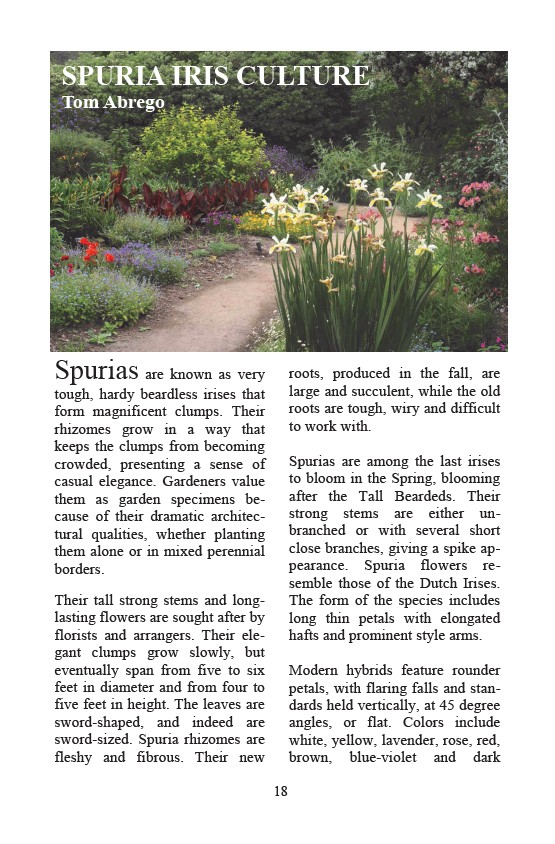
SPURIA IRIS CULTURE
Tom Abrego
18
Spurias are known as very
tough, hardy beardless irises that
form magnificent clumps. Their
rhizomes grow in a way that
keeps the clumps from becoming
crowded, presenting a sense of
casual elegance. Gardeners value
them as garden specimens be-cause
of their dramatic architec-tural
qualities, whether planting
them alone or in mixed perennial
borders.
Their tall strong stems and long-lasting
flowers are sought after by
florists and arrangers. Their ele-gant
clumps grow slowly, but
eventually span from five to six
feet in diameter and from four to
five feet in height. The leaves are
sword-shaped, and indeed are
sword-sized. Spuria rhizomes are
fleshy and fibrous. Their new
roots, produced in the fall, are
large and succulent, while the old
roots are tough, wiry and difficult
to work with.
Spurias are among the last irises
to bloom in the Spring, blooming
after the Tall Beardeds. Their
strong stems are either un-branched
or with several short
close branches, giving a spike ap-pearance.
Spuria flowers re-semble
those of the Dutch Irises.
The form of the species includes
long thin petals with elongated
hafts and prominent style arms.
Modern hybrids feature rounder
petals, with flaring falls and stan-dards
held vertically, at 45 degree
angles, or flat. Colors include
white, yellow, lavender, rose, red,
brown, blue-violet and dark